Bio students think they're cars: How I solved the problem with circular causality.
- Christian Moore Anderson

- Jul 28
- 4 min read
Updated: Sep 6
Move aside, DNA; if anything is ubiquitous in biology, it's the feedback loop. Yet, in my experience, students consistently show an interesting paradox:
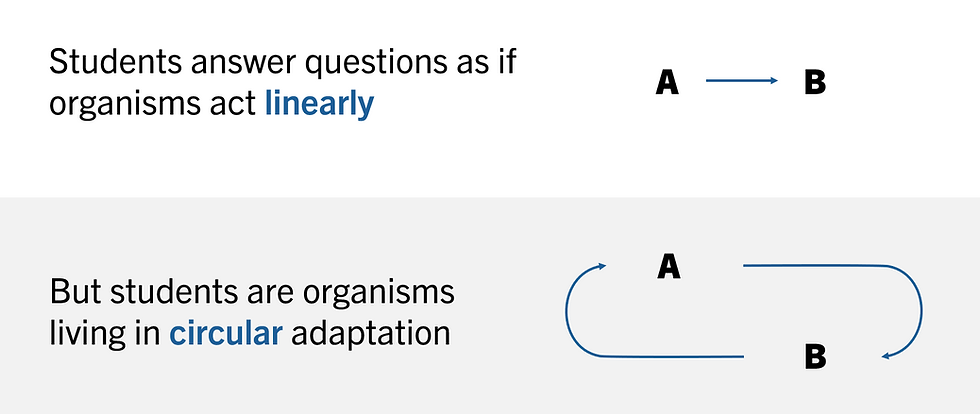
This blog post introduces the ideas I presented in a talk at the conference of The International Society for the History, Philosophy, and Social Studies of Biology (ISHPSSB).
Students live in a continual state of adaptation, regulating their body temperature, breathing rate, and food intake, as well as adapting their words and body language in conversation.
Yet, in schools, they perceive life to act like simple machines. For example, if I ask students what would happen if I changed or removed a part from an organism, they'll always tell me it'd die.

They perceive their answers as improving by adding more causal mediators. Instead of Input → Death, they might say Input → Mediating Causes → Death. But, in their view, the organism's fate is sealed, and the extra details in their prediction still place the organism on the road to death.
They see organisms like cars. If I remove a part from an engine, they think it'll malfunction and stop working. The car itself can't do anything about it. But organisms would act; they'd respond in an attempt to maintain their viability.

For example, removing a lung will cause a change in the body, but it'll deal with it and try to return itself to homeostasis. Maybe it reduces the oxygen in the blood, but the body compensates by building more red blood cells and haemoglobin.
This isn't just a paradox of education; it's a serious problem.
What is the purpose of biology education if not to help students make meaning of themselves as organisms? If students graduate from biology considering themselves analogous to nonadaptive machines, like cars, what have we achieved?
At best, they'll have learnt some peculiar vocabulary that doesn't help them much in explaining nature.
At worst, they'll perceive biology as engineering and nature as something to be governed and controlled.
Why don't students automatically presume that life will respond and adapt? Let's look at one course, studied by over 80% of 14–16-year-olds in England (AQA). What do we see?
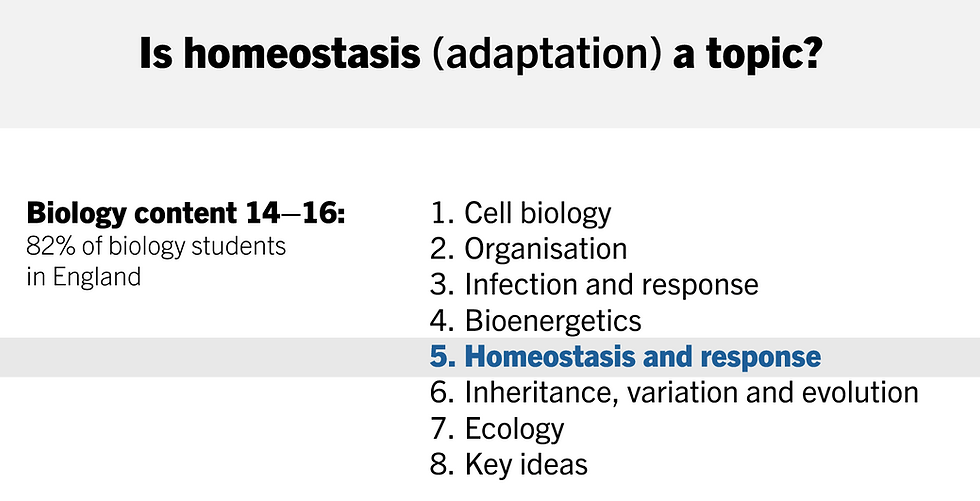
The heart of adaptation is circular causality, but here, it's only made explicit in a topic called "homeostasis and response". On the other hand, adaptation (the term) is made exclusive to natural selection.
But isn't the immune system an adaptive system powered by feedback loops? A pathogen enters the body and disrupts its dynamics. The immune system then acts to return us to our previous health. Do we not adapt all day to the energy demands of our cells: Raising and lowering our breathing and heart rates, regulating our pace, or resting when needed?
Aren't ecological communities self-regulated by the feedback loops between their members? Think of predator-prey negative feedback loops and the positive feedback loops of mutualisms.
Nevertheless, the problem can't fall entirely on a curriculum's content because circular causality is (always) present implicitly. If you're teaching biology, the chances are that feedback loops aren't far away. But, if they aren't explicitly part of a curriculum, maybe too much is left to chance.
On the other hand, interventions don’t work either. The idea that we can teach about feedback loops in an isolated topic and expect students to generalise the concept to others is wishful thinking. In my experience, they learn feedback as an oddity of the specific systems in the "homeostasis" topic.
I felt that the solution lay somewhere beyond the content. Like most teachers, I don't have a choice over the content I teach, but I do have the option to make the metacontent explicit. This is the content about the content, or, in other words, the way the content should be perceived.
I began sharing some principles with students that we could identify and discuss in most of our lessons. These were:
Homeostasis
Stable systems maintain key variables within limits.
Requisite Variety
A system’s variety of options MUST MATCH the variety of situations encountered.
Variation & Selection
Systems adapt by generating a variety of options and discarding unviable ones.
Circular Causality
Negative feedback loops counteract changes – and drive stability.
Positive feedback loops intensify changes – and drive state change.
These principles aren't just something to discuss; they frame the content in a specific way. They indicate that I, their teacher, see the content through the lens of adaptation. In most topics, we can identify feedback loops and discuss their consequences.
I also gave them a way of explaining the content. Curricula should encourage students to explain phenomena rather than just describe.
There's nothing worse than students only learning to list and label the parts found in biological systems. The ideal scenario is for students to explain how relationships between the parts bring about what we observe.
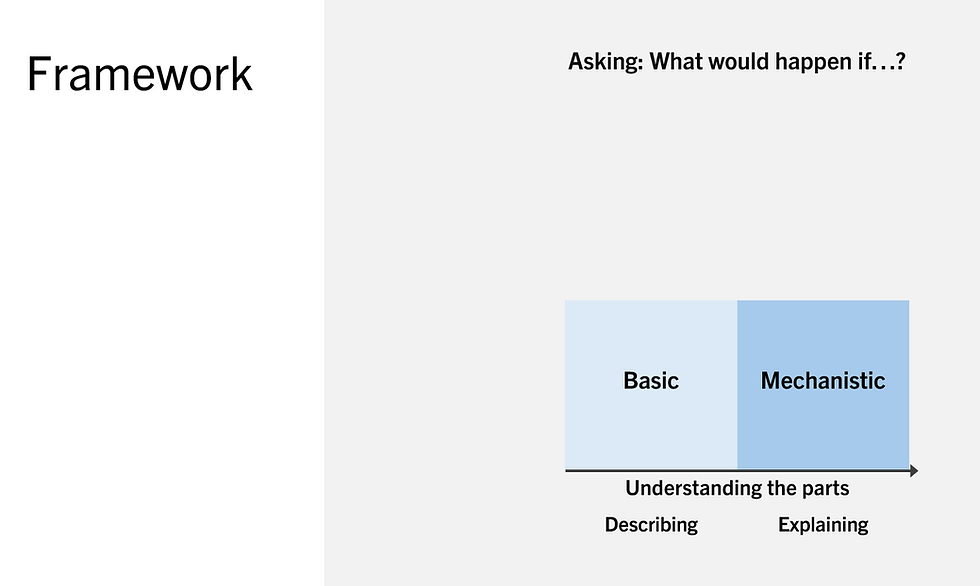
There's a problem, however. Consider this question: "What would happen if someone had their gallbladder removed?". A good mechanistic answer may look something like this:
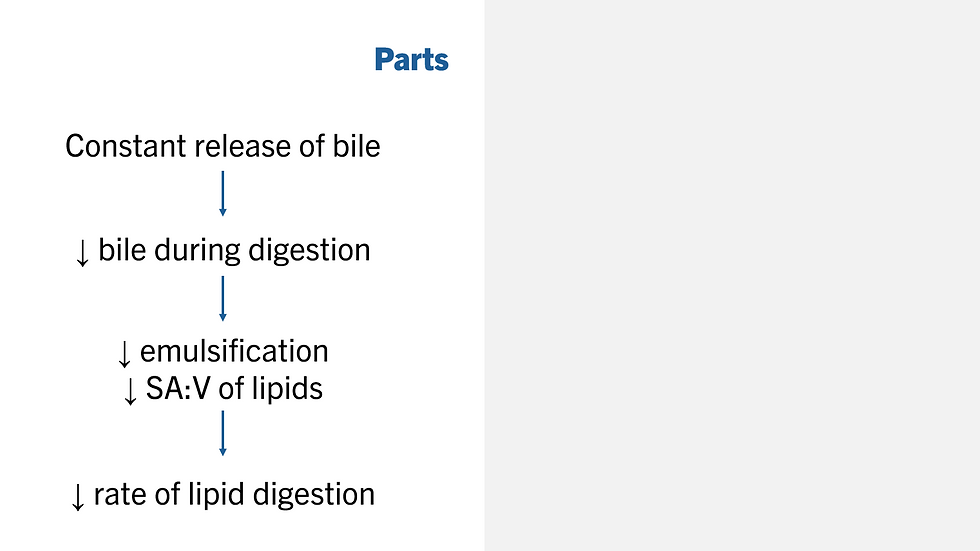
But what happens next? Some students would extend this mechanism until "death". And why wouldn't they? Our biology curricula force students to explain phenomena at the molecular and cellular levels, where they have very little intuitive knowledge.
If I wanted my students to consider adaptation, I needed to add a new dimension to the framework. In other words, it couldn't just be about understanding the parts, but also about understanding the whole.
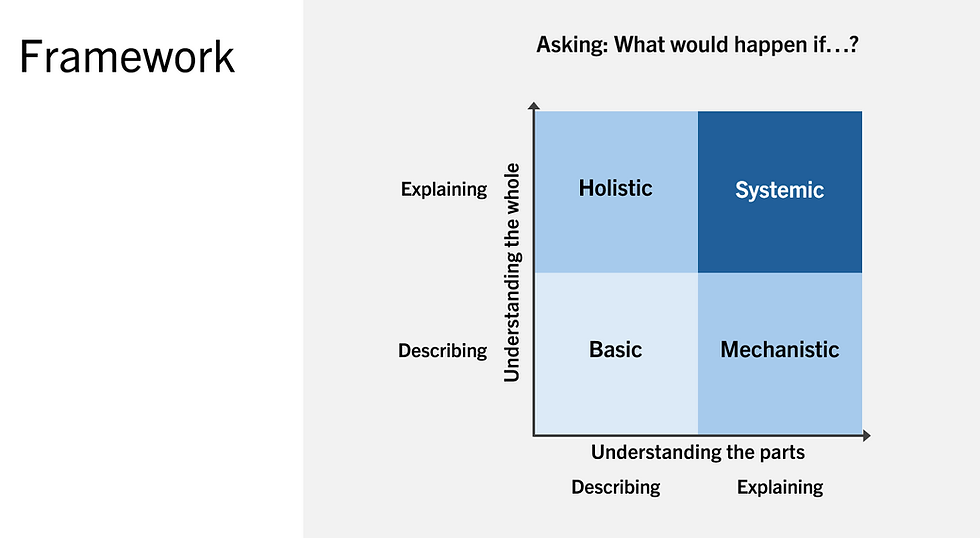
(Moore-Anderson 2023; 2024)
Having shared the framework with my students during most lessons, they began to realise that they couldn't just write a mechanism of the parts. For a more complete answer, they were encouraged to consider the effect on the whole organism. This is the level where they could see adaptation. Consider the updated answer:
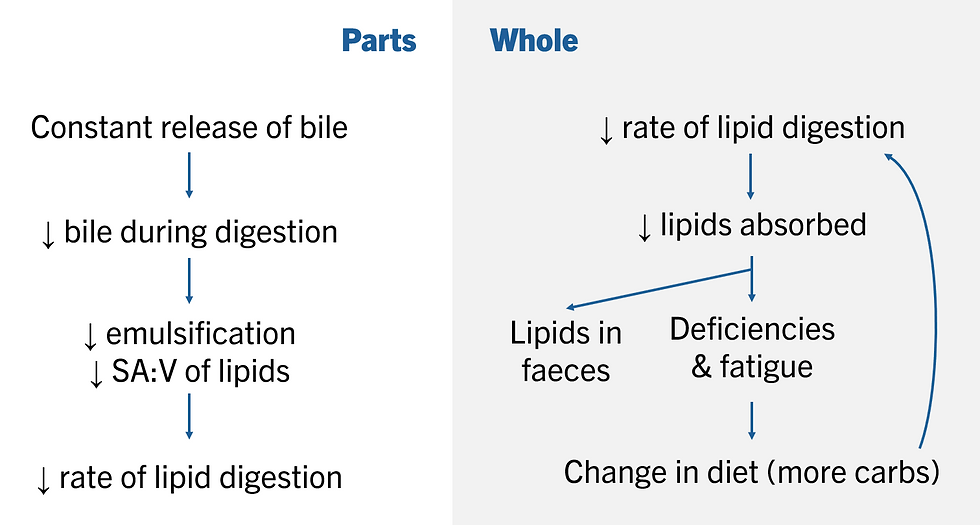
You'd avoid trouble by simply changing your diet. In hindsight, it feels intuitive. Yet, students find this hard. They appear to disconnect academic biology from lived biology, and these frameworks help reunite them.
My experience suggests that short interventions are not viable tools for this. They may work for learning content, but not for the deep-rooted way of seeing the content. After a year with my 14-year-old students (2 x 50mins a week), they typically only just begin to think in terms of adaptation. Learn more about teaching this way in Difference Maker.
References
Moore-Anderson, C. 2023. Biology Made Real: Ways of Teaching That Inspire Meaning Making.
Moore-Anderson, C. 2024. Difference Maker: Enacting Systems Theory in Biology Teaching.




